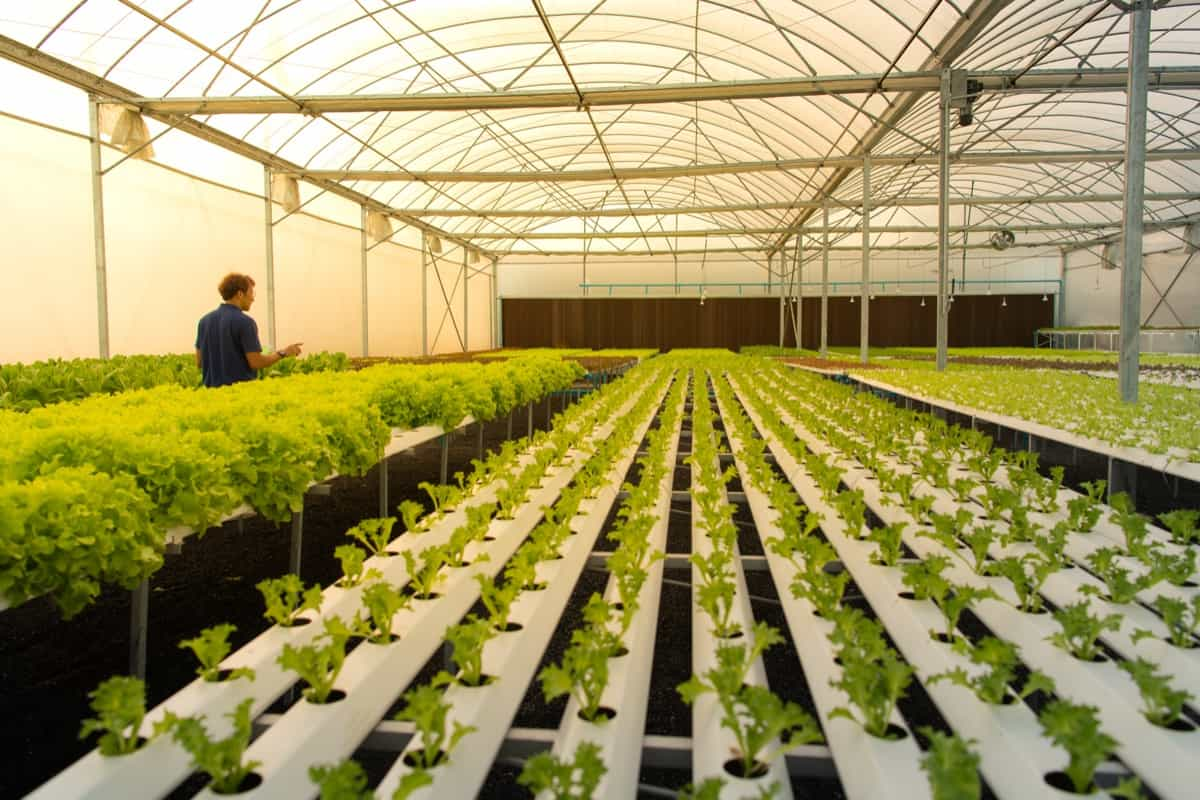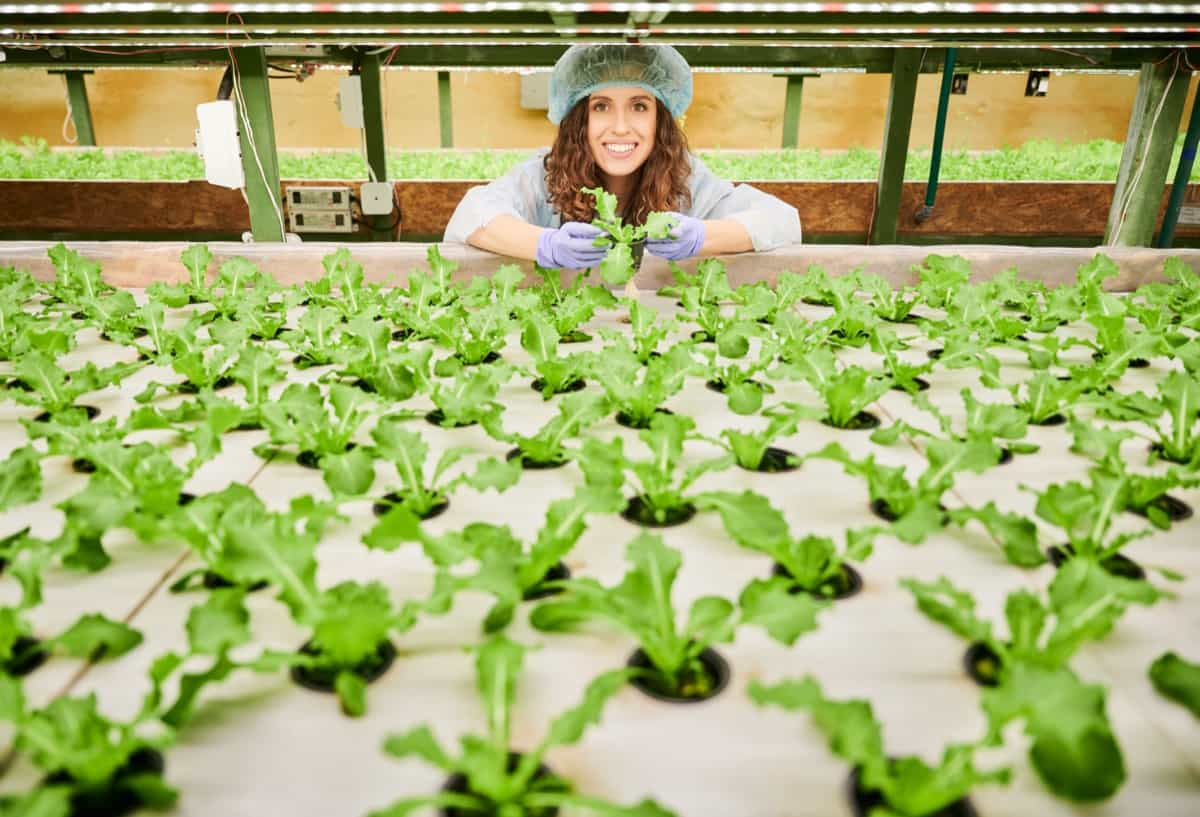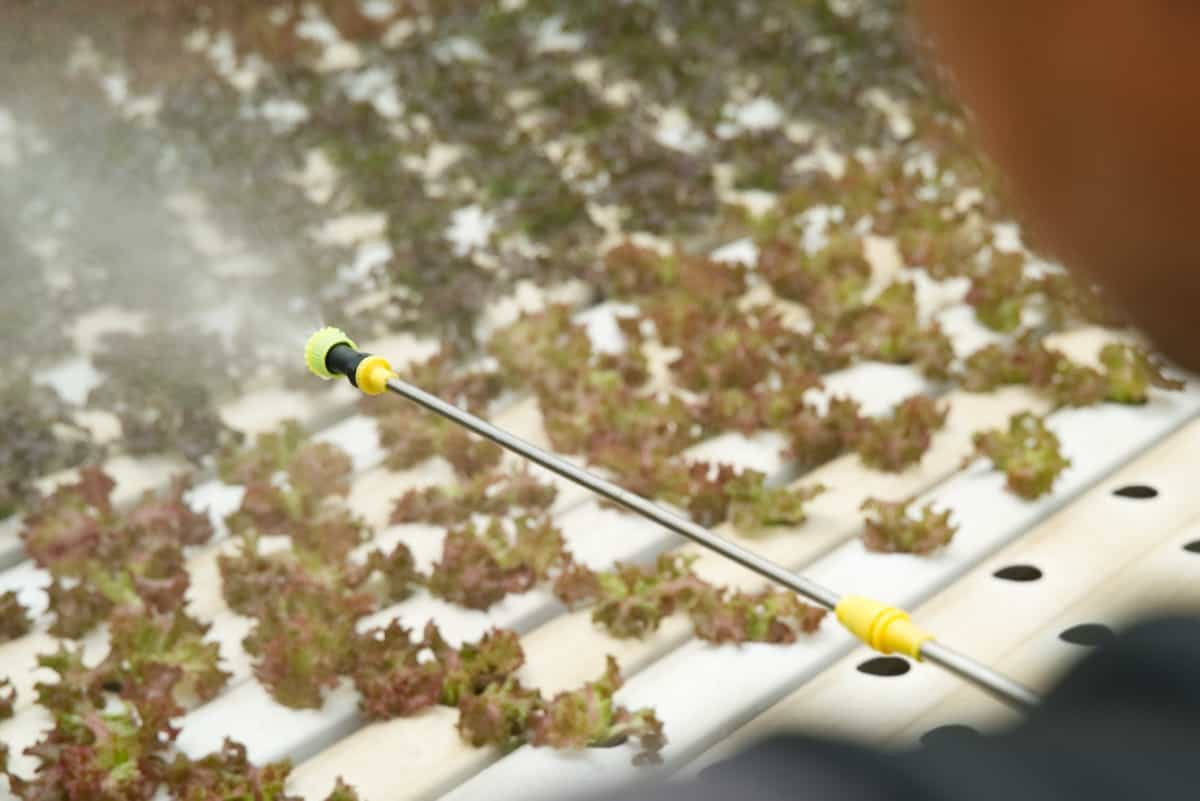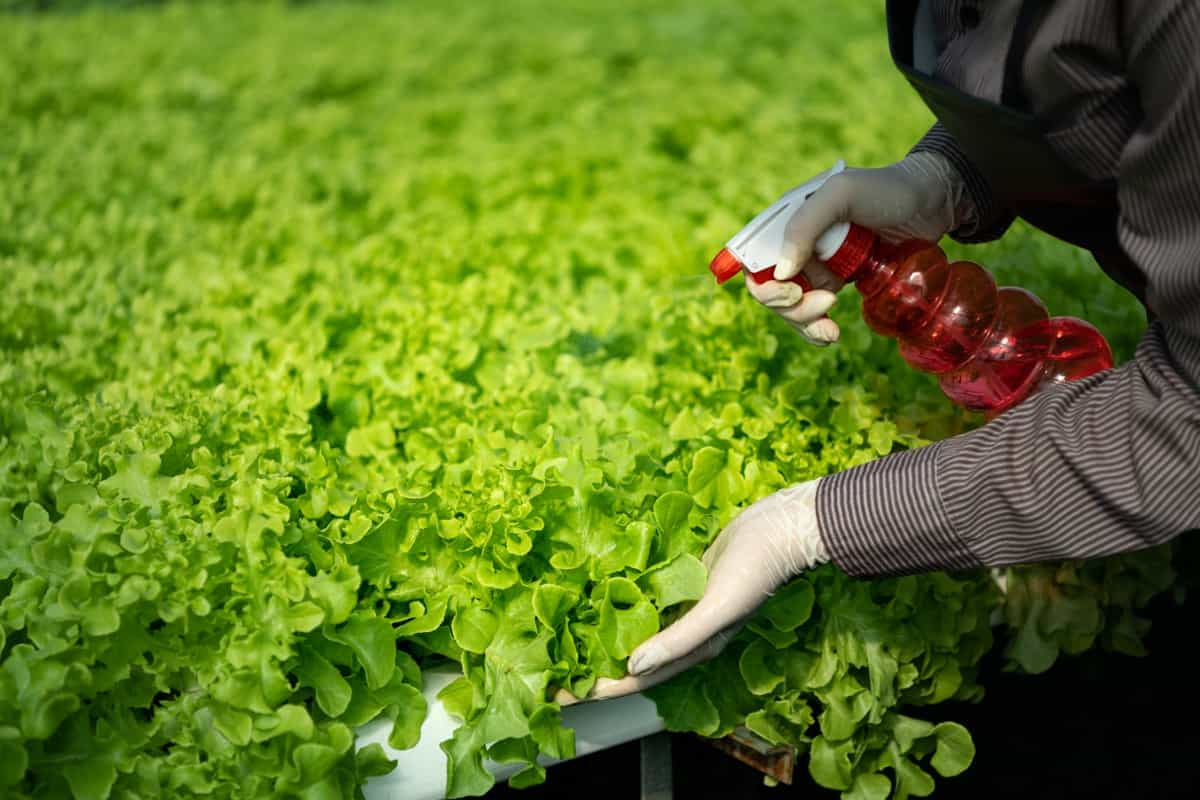Unveil the secret to pest-free hydroponic gardening with homemade pesticides. Harnessing nature’s power, these DIY solutions ensure 100% effectiveness while keeping your plants healthy and thriving. Embrace eco-friendly practices with natural pest control methods, such as neem oil, soap sprays, and garlic concoctions.

Combat fungal issues with herbal teas and vinegar solutions, safeguarding your hydroponic system sustainably. Introduce beneficial insects to maintain a balanced ecosystem and deter pests naturally. From chili pepper sprays to organic repellents, discover a plethora of options for homemade hydroponic pesticides that are both safe and potent.
Homemade Hydroponic Pesticides
Hydroponics grow plants without soil by nutrient-rich water solutions to nutrients directly to the plant roots. While hydroponic systems offer numerous benefits, such as increased growth rates and higher yields, they also present unique challenges when it comes to pest management.
Without the natural barriers provided by soil, hydroponic plants are more susceptible to pest infestations, including insects, fungi, and other pathogens. Therefore, hydroponic gardeners must implement effective pest control strategies to protect their crops and ensure optimal growth.
Understanding Hydroponic Pest Types
Insects are the most common pests encountered in hydroponic systems and can include aphids, thrips, spider mites, and whiteflies, among others. Fungi, such as powdery mildew and root rot, thrive in the warm, humid conditions often found in hydroponic environments. Pathogens, including bacteria and viruses, can also pose significant threats to hydroponic plants, spreading quickly and causing widespread damage if not addressed promptly.
Identifying Common Pests in Hydroponic Systems
Identifying common pests in hydroponic systems is crucial for effective pest management. Common signs include:
- Yellowing or discolored leaves.
- Wilting or stunted growth.
- Visible pests on plant surfaces.
- Unusual spotting or damage to plant tissues.
Regular inspections and monitoring of plants can help hydroponic gardeners take proactive measures to address issues before they escalate. Early detection of pest infestations is key to preventing widespread damage and crop loss. Observing plants closely and promptly addressing any signs of pest activity can minimize damage and protect crops.
Basic Ingredients for Homemade Pesticides
Homemade pesticides are a safe and effective way to control pests in hydroponic systems. Common ingredients include neem oil, soap, garlic, chili peppers, vinegar, and herbal teas. These natural ingredients possess pesticidal properties that can effectively control insects, fungi, and fungal infections. Neem oil, derived from the neem tree, an insecticide, repellent, and fungicide. Soap, when diluted with water, can suffocate soft-bodied insects like aphids and spider mites.
Garlic and chili peppers contain repellent compounds, making them suitable for spray solutions. Vinegar, with its acidic properties, can control fungal infections like powdery mildew. Herbal teas from aromatic plants like mint and rosemary can repel pests and deter fungal growth. To prepare and apply homemade pesticides, basic tools, and equipment include a spray bottle or sprayer, measuring cups and spoons, mixing bowl or container, funnel, and protective gear like gloves, goggles, and masks.
Neem Oil Solution for All-Purpose Use
Homemade pesticides are a safe and effective method for controlling pests in hydroponic systems. Common ingredients include neem oil, soap, garlic, chili peppers, vinegar, and herbal teas. These natural ingredients have pesticidal properties that can effectively control insects, fungi, and fungal infections.
In case you missed it: How to Control Hydroponic Basil Pests and Diseases Naturally: How to Get Rid of Them with Natural and Organic Treatment

Neem oil acts as an insecticide, repellent, and fungicide, while soap can suffocate soft-bodied insects like aphids and spider mites. Garlic and chili peppers contain repellent compounds, vinegar controls fungal infections, and herbal teas from aromatic plants repel pests and deter fungal growth. Basic tools for preparing and applying these pesticides include a spray bottle, measuring cups, mixing bowl, funnel, and protective gear.
Soap-Based Sprays for Soft-Bodied Insects
Soap-based sprays are an eco-friendly and effective method for controlling soft-bodied insects in hydroponic systems. They work by suffocating pests on contact, disrupting their cell membranes, causing dehydrate and die. These sprays are easy to prepare and apply, providing rapid pest control without harmful chemicals. To create an effective soap spray:
- Mix 1-2 tablespoons of liquid soap with 1 quart of water in a spray bottle or sprayer.
- Spray the solution directly onto affected plant surfaces, ensuring complete coverage of leaves and stems.
- Reapply the spray every 7-10 days or as needed to maintain control.
To ensure effective pest control, apply soap sprays during cooler temperatures and less stressed plants. Avoid spraying plants in direct sunlight, as this can cause the soap solution to evaporate quickly and reduce its effectiveness. Thoroughly coat plant surfaces with the soap solution, ensuring complete coverage of leaves and stems. Reapply the spray every 7-10 days or as needed to maintain control. By following these tips, you can effectively control soft-bodied insects in your hydroponic system and protect your plants from damage.
Garlic and Pepper Sprays for Repellent Action
Garlic and chili peppers are natural repellents that can help deter pests and protect hydroponic plants from infestations. Garlic contains sulfur compounds that repel insects, while chili peppers contain capsaicin, a compound that repels and irritates pests. To create a potent garlic and pepper spray for hydroponic systems, chop 4-6 cloves of garlic and 2-3 chili peppers, combine them in a quart-sized container, add 1 quart of water, cover tightly, and let it steep for 24-48 hours to extract active compounds.
Strain the mixture through by strainer or cheesecloth to remove solid particles, then transfer the strained liquid to a spray bottle or sprayer. For maximum effectiveness, employ proper spraying techniques, such as shaking the spray bottle or sprayer before each use, spraying the solution directly onto affected plant surfaces, and reapplying every 7-10 days or as needed. By following these spraying techniques, you can effectively harness the power of garlic and pepper sprays to repel pests and protect your hydroponic crops.
Herbal Tea Mixtures for Pest Control
Herbal teas made from aromatic plants like mint, rosemary, and thyme are used as natural pesticides in hydroponic systems. These herbs contain compounds that repel pests and deter fungal growth, making them ideal for organic gardening. By brewing herbal teas and applying them to plant surfaces, hydroponic gardeners can effectively control pests while promoting a healthy, sustainable growing environment. When selecting herbs for use in herbal tea pesticides, it is essential to choose varieties with pesticidal qualities that are safe for edible crops. Some known pest-repelling properties include:
- Mint, which repels ants, aphids, and flea beetles.
- Rosemary, which repels cabbage moths, carrot flies, and mosquitoes.
- Thyme repels cabbage loopers, cabbage worms, and spider mites.
To brew herbal tea pesticides for hydroponic systems, place a handful of fresh or dried herbs in a quart-sized jar, fill with boiling water, cover tightly, steep for 24-48 hours, strain through strainer or cheesecloth, and transfer the strained liquid to a spray bottle or sprayer.
Vinegar Solutions for Fungus and Mildew
Vinegar solutions are an effective and environmentally friendly fungicide for hydroponic systems, helping to control fungal infections like powdery mildew and protect plants from disease. The acidic properties of vinegar create an inhospitable environment for fungal growth, making it an eco-friendly choice for hydroponic systems. To prepare vinegar-based fungicides, mix equal parts white vinegar and water in a spray bottle or sprayer, shake well, and spray the solution directly onto affected plant surfaces, focusing on visible signs of fungal infection.
In case you missed it: How to Control Hydroponic Strawberry Pests and Diseases Naturally: A Sustainable Approach

Reapply the solution every 7-10 days or as needed to control fungal growth and prevent further infection. However, caution is advised when using vinegar solutions on delicate or sensitive plants, as it can be harsh on plant tissues and may cause damage if applied excessively. Test the vinegar solution in a small area before applying it to the entire plant and dilute it as needed to minimize the risk of damage.
Beneficial Insects and Companion Planting
In hydroponic systems, beneficial insects and companion planting can be beneficial in pest management. Insects like ladybugs, lacewings, and predatory mites can control pest populations by feeding on aphids, spider mites, and thrips. Companion planting involves growing pest-repellent plants alongside hydroponic crops to deter pests and promote a healthy growing environment. To introduce beneficial insects into your hydroponic system, purchase them from a reputable supplier and release them into your garden according to the supplier’s instructions.
Companion plants that naturally repel pests include marigolds, basil, and nasturtiums. Marigolds repel nematodes, aphids, and whiteflies; basil repels mosquitoes, aphids, and spider mites; and nasturtiums repel aphids, whiteflies, and squash bugs. By incorporating these plants into your hydroponic garden, you can naturally deter pests and create a pest-resistant growing environment.
Maintenance, Monitoring, and Prevention
Regular maintenance, monitoring, and prevention are crucial for effective pest management in hydroponic systems. Proper sanitation and hygiene practices, such as cleaning and disinfecting equipment, disposing of dead or diseased plant material, monitoring nutrient levels and pH levels, and inspecting plants for pest activity, can help minimize pest infestations and promote a healthy growing environment.
Early detection of pest infestations is essential, and regular monitoring schedules can help identify and address problems before they spread. Homemade pesticides, such as neem oil, soap-based sprays, garlic and pepper solutions, herbal teas, vinegar solutions, beneficial insects, and companion planting, are used to manage pests and promote a healthy growing environment. By incorporating these strategies into their gardening routine, hydroponic gardeners can enjoy successful harvests and long-term growth.
In case you missed it: How to Control Hydroponic Pests Naturally: How to Get Rid of Them with Natural and Organic Treatment

Conclusion
Homemade hydroponic pesticides offer 100% natural and effective solutions for pest management. By harnessing ingredients like neem oil, garlic, and vinegar, hydroponic gardeners can protect their crops without harming the environment, ensuring healthy and thriving plants in their systems.
- Deworming Schedule for Dogs/Puppies: A Beginners Guide
- How to Prevent and Control Parasites in Goats
- Beneficial Insects in Pest Management
- Natural Solutions for Pest Control in Flower Gardens
- Types of Fungicides Used in Agriculture
- Common Issues in the Fruit Development Stage of Pomegranate Farming
- Fruit Development Issues in Papaya: Easy Solutions and Treatment
- Soil-Borne Diseases and How to Protect Your Plants
- Practices to Prevent Disease Spread in the Garden